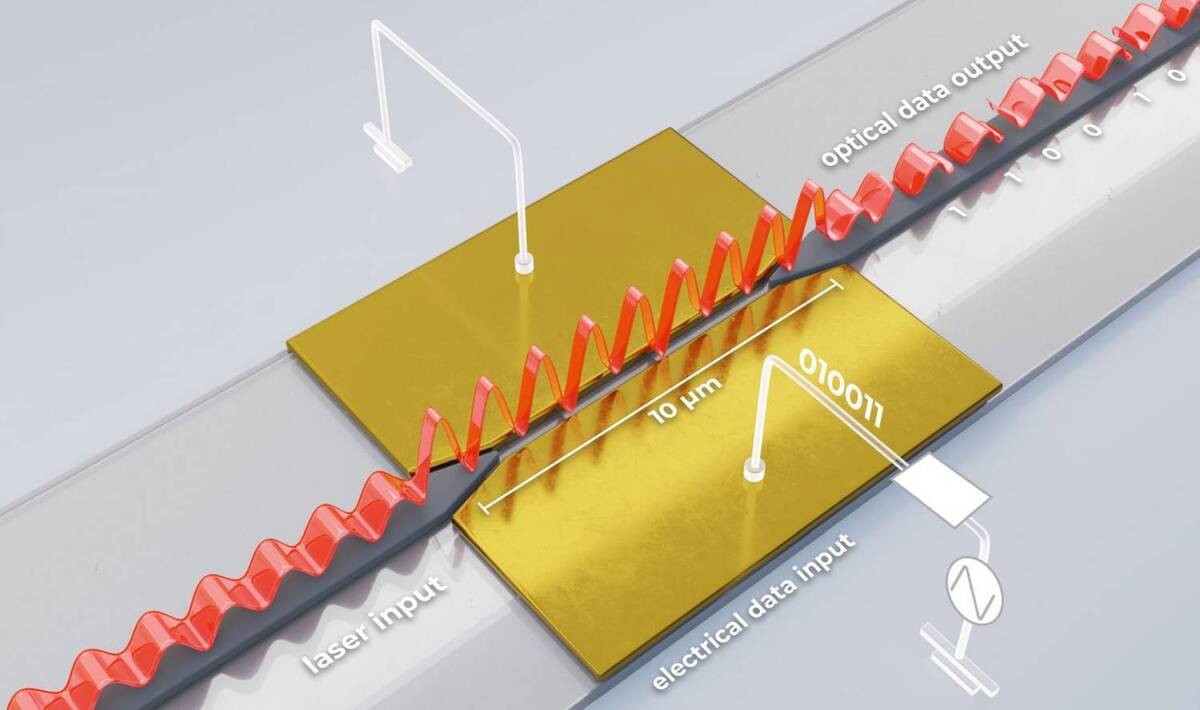Tiny Gold Device Just Shattered Data Speed Records

This innovation is set to transform 6G, computing, and medical imaging by making data transfer faster and more efficient, the journal Optica reported.
Plasmonic modulators are tiny devices that convert electrical signals into optical signals for transmission through optical fibers. Until now, no modulator of this kind had been able to operate beyond a terahertz – equivalent to over a trillion oscillations per second. However, researchers led by Jürg Leuthold, Professor of Photonics and Communications at ETH Zurich, have achieved this breakthrough. Previously, similar modulators were limited to frequencies of 100 to 200 gigahertz, making this new development five to ten times faster.
These modulators serve as crucial links between electronic and optical communication, enabling the transfer of large volumes of data. “Data is always initially present in electrical form and nowadays, its transmission always involves optical fibers at some point,” explains Professor Leuthold.
The next generation of mobile communications (6G) will operate in the terahertz range. Its backbone – the cables between the base stations – relies on optical fiber technology. “Our modulator allows radio signals and other electrical signals to be converted into optical signals directly and therefore efficiently,” says Yannik Horst, who worked on the component during his doctoral thesis.
Although the transfer of terahertz signals onto optical fiber is already possible from a technical perspective, it is a laborious process and currently requires several expensive components. The new modulators can convert the signals directly, reducing energy consumption and increasing measurement accuracy. Moreover, different components are currently needed for different frequency ranges. The new modulator can be used with any frequency from 10 megahertz to 1.14 terahertz. “We cover the entire frequency range with a single component. It’s therefore extremely versatile in terms of applications,” says Horst.
Other potential applications include optical fiber data transmission within and between high-performance computing centers. Last but not least, the components are also of interest for high-performance measurement technology, including imaging techniques in medicine, spectroscopic methods for material analysis, baggage scanners at airports, and radar technology. Some devices of this kind already operate in the terahertz range today.
The new modulator is a tiny nanostructure made up of various materials, including gold, and makes use of the interaction between light and free electrons within the gold. The technology was developed at ETH Zurich and the device was manufactured by Polariton Technologies, an ETH spin-off that emerged from Leuthold’s group. At present, the company is working to bring the terahertz modulator to market so that it can be widely used in future applications in data transmission and measurement technology.
4155/v





















